

Historical Tales | News | Vampires | Zombies | Werewolves
Virtual Academy | Weapons | Links | Forum
 |
 |
Historical Tales | News | Vampires | Zombies | Werewolves Virtual Academy | Weapons | Links | Forum |
Return to Zombic Virology
To view the original version of this section, click here.
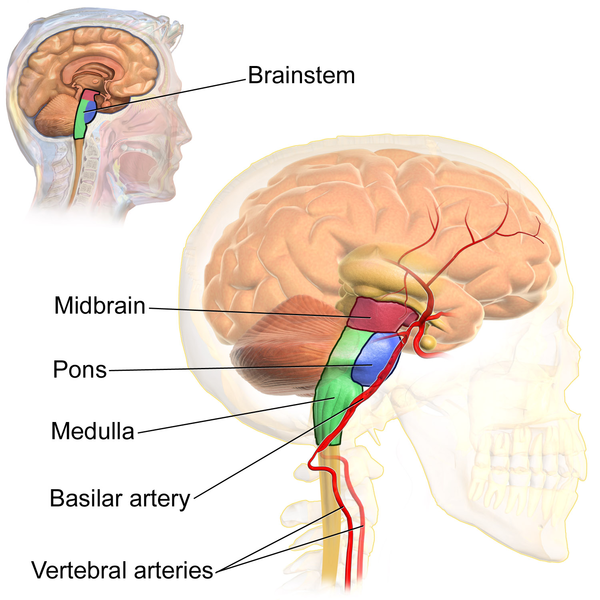 |
|
The brainstem is the only vulnerable region of the zombic brain—specifically the pons and medulla. |
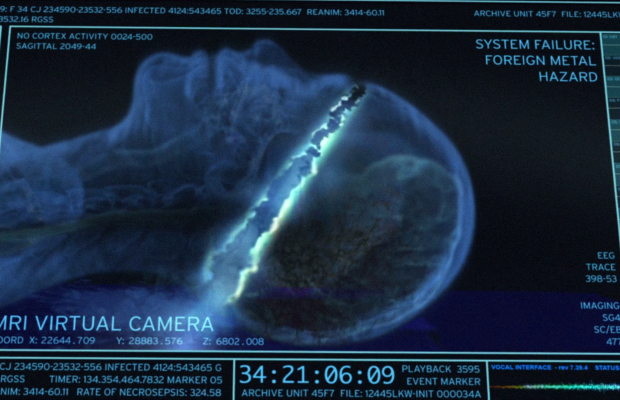 |
|
This image from AMC's The Walking Dead shows the proper trajectory for a frontal headshot. Going straight through the mouth also works, as does the ear canal or the base of the skull. |
Dopamine/Endorphins: The smell and taste of living flesh trigger a large release of these adrenaline-like neurotransmitters into the zombic brain. Unlike vampires, zombies are largely unaffected by mind-altering drugs, as most of their compatible brain functions are inactive.
Circadian Rhythms: As with humans, zombies tend to sleep at night. However, it's fitful at best, as they will doze off for an hour or two, awaken, and doze off again, with lots of twitching and groaning and apparent nightmares.
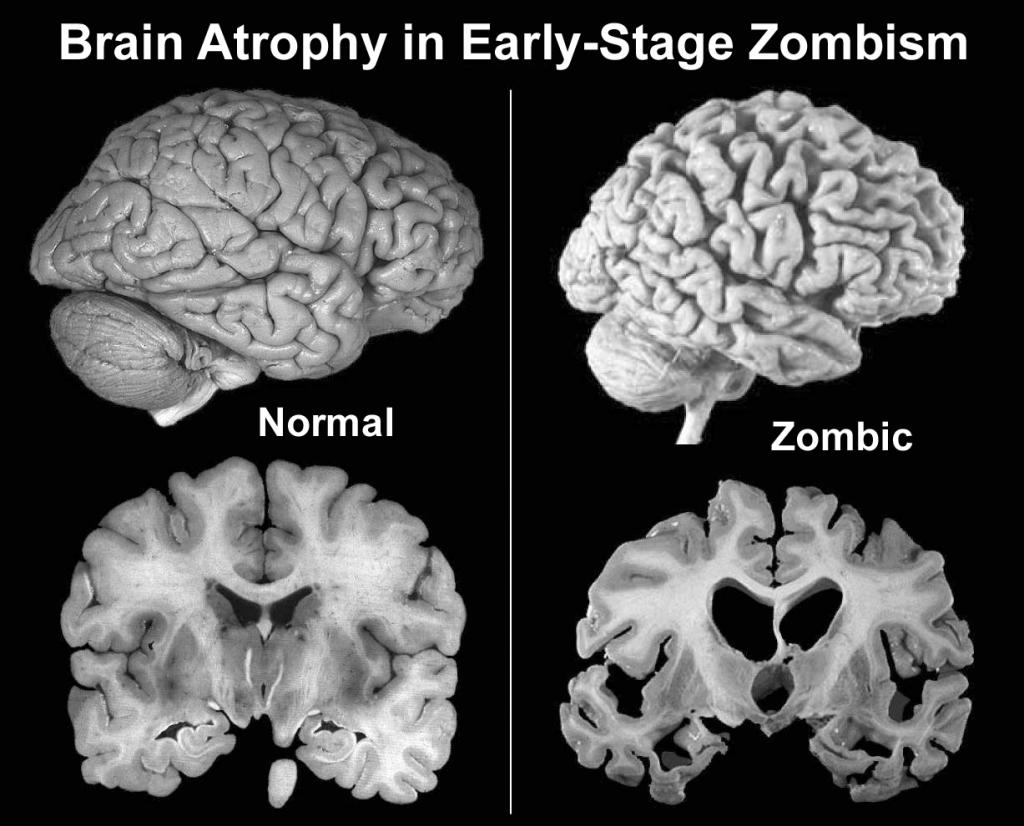 |
Spine/Nervous System:
Zombies have exhibited the ability to withstand significant trauma to their central and peripheral nervous system. In a famous series of experiments conducted by FVZA scientists in 1972, zombies who had their spinal cords severed—and then laid on their backs—regained the ability to walk within 24 hours. Zombies who were laid on their bellies took at least 72 hours to regenerate, since less blood was able to pool in their spinal nerves. Although researchers have been unable to unlock the exact mechanism for this process of repair, massive stem cell production and the absence of obstructive glial scarring are definitely key elements. Limited regeneration also occurs in the lower brainstem, though it's somewhat slower due to the higher complexity of its neurons. As for medical applications, there is hope that this process can be harnessed to reverse the effects of brain damage and paralysis in humans.
Reflex Action: Severed zombie heads are still capable of blinking, flaring nostrils, moving lips, making expressions, and even biting, up to one hour after the brain loses consciousness (which doesn't occur until a full minute after decapitation, compared to just a few seconds for normal humans, and up to 30 seconds for vampires). Comparatively, reflex action occurs in humans for only 30 seconds, and in vampires for up to 5 minutes. Interestingly, once all the blood oxygen has been used up, the onset of brain death seems to occur within a consistent time frame in all three species (roughly 5 minutes). As for other body parts, severed zombie hands can open and close for more than a minute after detachment.
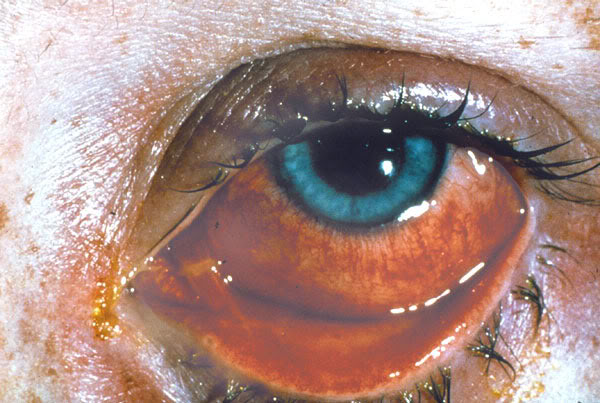 |
| Ocular close-up of an early-stage zombie |
Sight: Due to degradation of the lens and cornea, zombies suffer from severe myopia. In addition, they are colorblind, the scleras are red with inflammation, and gradual cataract formation causes the pupils to become milky and white. In time, complete blindness will set in as the optic nerves degrade, the vitreous humor filling the eyeballs liquefy and leak out, and the tissues holding the eyes in place rot away, causing them to come loose and fall right out of their sockets.
Hearing: Infection, swelling, fluid buildup and eardrum perforation cause zombies to lose about 50 percent of their hearing within a few weeks of transformation. Complete deafness sets in within another month as necrosis spreads further into the ear. Needless to say, zombies are poor candidates for ASL training, and it's unknown if modern-day cochlear implants could rehabilitate them.
 |
|
Zombic ear canal prior to drum perforation |
Taste/Touch: Contrary to some sources, zombies still retain some degree of physical sensation—similar to how a person's hand feels after laying on it for too long—with taste being the most prominent. Although their sense of pain is quite muted, zombies still suffer from chronic aching as their bodies break down. Decomposition sometimes causes the tongue to swell inside a zombie's mouth, blocking its airway; to avoid suffocating to death, it has no choice but to chew off or rip out the bloated organ.
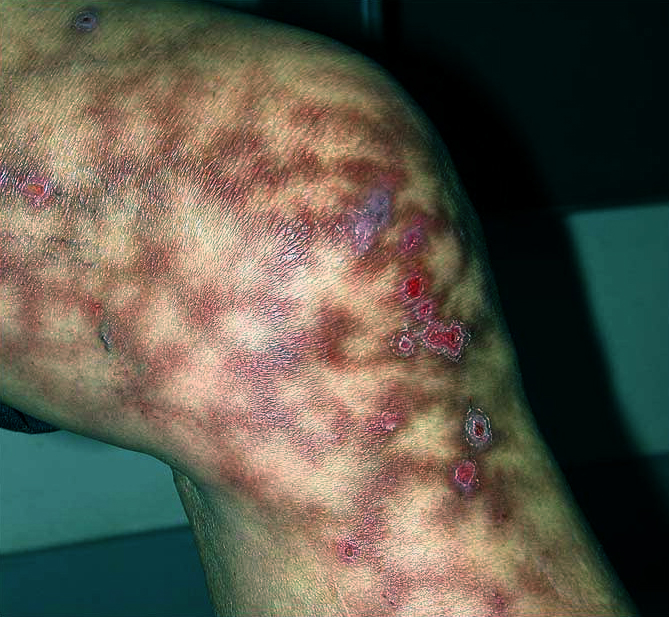 |
|
Skin mottling and ulceration in an early-stage zombie |
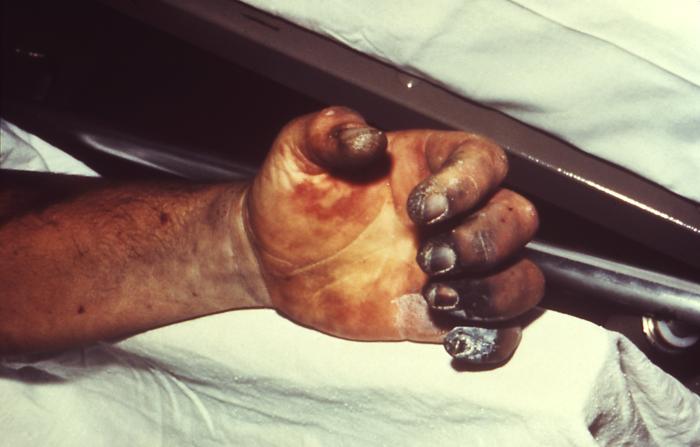 |
| The extremities are the first to experience necrosis. |
Hair/Nails: Early-stage zombies still experience growth to hair and nails, albeit to a much slower degree. It only goes downhill from there as toenails and fingernails start detaching from their beds and hair sheds from the extremities. As with vampires, the scalp is the last area to lose all of its hair, though the rate of hair loss occurs at a much faster rate (within the span of a year, as opposed to a decade). Like their teeth and jawbones, zombies will claw at their victims using their exposed finger bones long after their nails have come off.